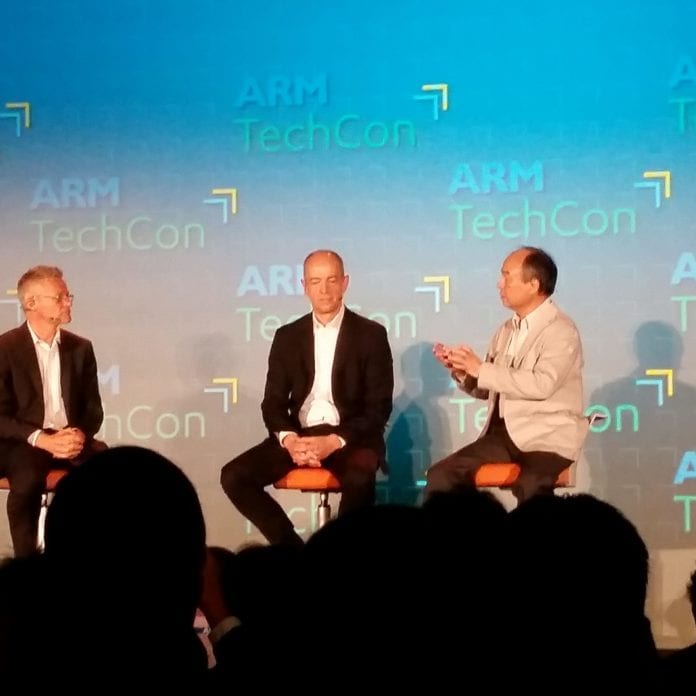SANTA CLARA, California – SoftBank CEO Masayoshi Son likened the impending boom in “internet of things” devices to the evolutionary period known as the Cambrian explosion: a turning point for life on earth.
“The next big paradigm shift is coming from mobile into the IoT. That’s what I believe,” Son told attendees at this year’s ARM TechCon, comparing the advent of IoT sensors to the evolution of eyes, a sense of smell and other senses among prehistoric creatures, which gave them an outsized advantage over competing life forms without such primitive “sensors.” The Cambrian explosion marked the turning point between relatively few species to millions of diverse life forms, and Son said he expects a similar radical shift to happen in the IoT space in the next few years that will give human beings an entirely new perspective on the planet and the flow of daily life. SoftBank predicts the next 20 years will result in 1 trillion cumulative IoT devices – and everywhere there is a sensor collecting data, Son noted, “there is a chip.” British microprocessor designer ARM’s technology was the basis for nearly 15 billion chips shipped last year and underpins much of the mobile phone chipset market as well as enabling many IoT devices.
When asked why SoftBank decided to acquire – and pay a hefty premium for – ARM, Son said, “This is the answer: now is the time. This is the Cambrian explosion.”
It was just about seven weeks ago that SoftBank’s $31 billion purchase of ARM closed, with SoftBank promising to make more resources available to the company, including expanding ARM’s workforce in the U.K. ARM CEO Simon Segars told the crowd SoftBank’s investment in ARM is “going to allow us to pursue our ambitions faster and with more scale and more aggressively than we could have done before” and that ARM would be able to accelerate its roadmap with SoftBank’s backing.
Part of that roadmap includes the new products launched at the show this week, which are heavily focused on supporting IoT development and include ARM’s first foray into software-as-a-service. ARM called the launch its “most comprehensive product suite ever to deliver new levels of security, efficiency, low-power connectivity and device life cycle management for the ‘internet of things.'”
Pete Hutton, EVP and president of product group at ARM said in a statement on the product launch: “The IoT already runs on ARM but the goal now is scale, which we are enabling today through a uniquely comprehensive set of technologies and services built to work together seamlessly.”
ARM’s new solutions include bringing its TrustZone security features to its Cortex-M23 and Cortex-M33 embedded processors; expanded support for Bluetooth 5 and 802.11.14.5 low-power implementations; new offerings for reference designs and guidance to help IoT system-on-chip designers optimize their implementations; and a new IoT subsystem design that combines ARM’s security features, radio support and processors. The company also launched ARM Mbed Cloud, its new software as a service solution for connecting, securing, provisioning, managing and updating IoT devices – an offering aimed at making it easier for original equipment manufacturers to offer the services that enable large-scale deployment of IoT devices.
“This explosion of IoT is really coming,” Son said, and it will prompt the reinvention of transportation, of finance, health care and many other verticals that present major opportunities as part of what he sees as an inevitable march toward a more intelligent, connected world of IoT.
“Whether we like it or not, technology will evolve,” Son said. “This Cambrian explosion is happening, whether you like it or not.”
Follow me on Twitter! @khillrcr

